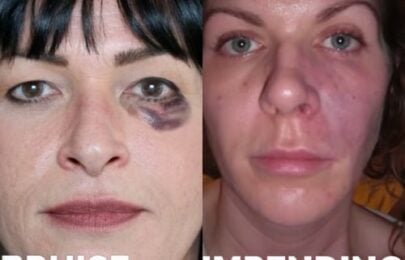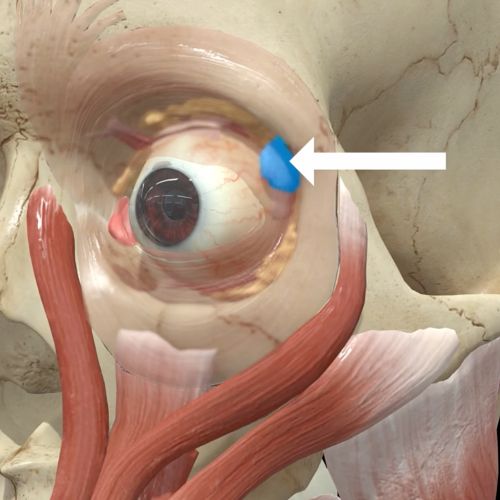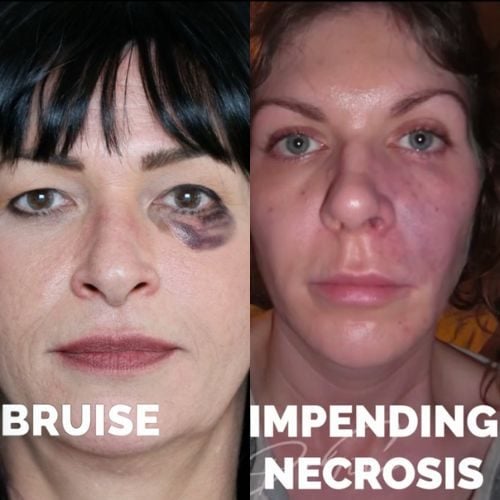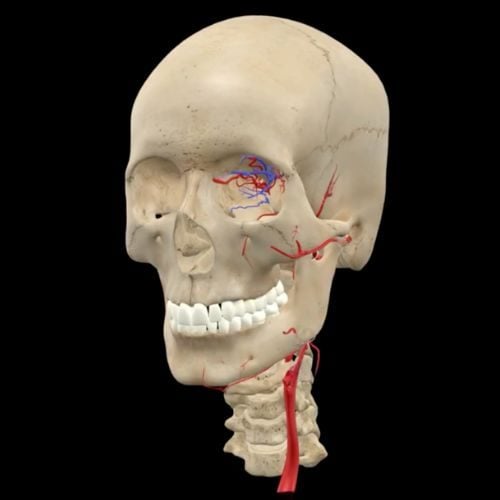- Mail us: support@drtimpearce.com
Autoimmune diseases and dermal fillers – is it safe to treat?
You may be interested
 Dr Tim Pearce
Dr Tim Pearce
This is a common question that Dr Tim Pearce hears – Is it safe to give dermal fillers to patients with autoimmune diseases?
He discusses the difficulties in understanding whether it is safe to treat, the contraindications when it comes to autoimmune diseases, and the lack of evidence of interactions in such cases.
Aesthetic practitioners need to understand that there are approximately 70 different autoimmune diseases, all with differing levels of severity which could present in your clinic. It is therefore somewhat impossible to consider all eventualities and all possible contraindications for dermal filler or botulinum toxin treatments. However, there are ways in which you can evaluate a patient’s medical history and their current medical health to determine likely contraindications, the potential for complications, and your decision on whether to treat.
 Dr Tim will be discussing more medical aesthetic training tips as part of his upcoming webinar series, so if you’re looking to increase your CPD-certified learning and want reassurance about how you’re treating patients, then step one is to register for the free webinars by Dr Tim.
Dr Tim will be discussing more medical aesthetic training tips as part of his upcoming webinar series, so if you’re looking to increase your CPD-certified learning and want reassurance about how you’re treating patients, then step one is to register for the free webinars by Dr Tim.
Most practitioners start with the scenario of – I have a patient who has X, they are on medication Y, is it safe for me to treat them with dermal fillers?
With so many autoimmune diseases and so many prescribed medications to treat these diseases, it requires significant calculations to think of all the possible scenarios that could be presented before you and whether you would choose to treat that patient. It is very unlikely that there will be studies to back up treating every patient with X, who is taking Y, and the many permutations thereof.
Is there a link between dermal fillers and autoimmune diseases?
There are many autoimmune diseases which you may come across, which could include rheumatoid arthritis, thyroid disease, lupus or Chron’s disease, but you will never find authoritative guidance on every possible patient presentation as there simply isn’t enough published study data. Therefore, we need to think through how we can make the best decisions for our patients from the information that we have.
There are important discussions within the medical aesthetic arena which point to delayed onset complications because autoimmune diseases are quite common, so they could be a factor in nodule or granuloma formation. But, there is absolutely no evidence to support the concept that dermal fillers can cause an autoimmune disease or that you are guaranteed to get a reaction from a dermal filler, simply because you have an autoimmune disease.
It is still a very grey area. However, you can evaluate the risk of a type 4 hypersensitivity reaction, which are cell-mediated reactions and are commonplace with both autoimmune diseases and allergies. A delayed reaction to a dermal filler would be a manifestation of an autoimmune disease as there is hyperactivity in the immune system.
Are autoimmune diseases a contraindication for dermal filler treatment?
The short answer is no. If the autoimmune disease is well-controlled and well-managed, then the chances of a reaction or complication are low.
In fact the statement, “no causal relationship has been established between the use of filler and autoimmune diseases like dermatomyositis/polymyositis, lupus erythematosus, rheumatoid arthritis or scleroderma,” was published in the Journal of Cutaneous Aesthetic Surgery in 2010 by Philippe Lafaille and Anthony Benedetto in a paper entitled Fillers: Contraindications, Side Effects and Precautions.
Most dermal filler manufacturers will recommend that you do not treat a patient with an autoimmune disease during a so-called active period for the disease, what we may refer to as having a “flare-up”. In such times, it would be an absolute contraindication to electively treat them with a filler product, whilst they are in an unstable medical state. All practitioners should avoid
Listen to what your patients tell you, look for things which may raise red flags or demonstrate uncertainty. Examples may include that they have started taking a new medication for their condition recently, they may feel like they’re “coming down with something” (signs of a viral infection), they may be pregnant or trying to conceive. All of these would increase uncertainty on the outcomes of treatment yet are easily avoided by waiting and considering treating later.
If a patient has a good medical history which indicates a proper diagnosis, treatment plan, and long-term stability of their autoimmune disease, then you can feel more reassured in your decision to treat them with medical aesthetic treatments. It is likely that a patient could still go on to have a flare-up whilst they still have a dermal filler product within their system. However, the majority of patients with an autoimmune disease have defined symptoms, which they are well aware of, so together you can determine the frequency of good and bad episodes and plan treatment to coincide with calm periods for the disease.
A recent diagnosis or inconsistencies in their treatment regime should raise concerns about the stability of their diseases and impact on your decision to treatment with cosmetic injectables.
There is an option to consider testing patients who have an autoimmune disease via intradermal placement of the filler product to evaluate any reactions. The process involves a small deposit in the forearm, a two week wait and evaluation for product hardness, redness, or tenderness at the injection site. Ideally, this can be repeated and reviewed after another two weeks. This process if not ideal as it incurs both delay and additional cost for both parties and there is little evidence to support this as best practice.
Rheumatoid Arthritis
A patient presenting with rheumatoid arthritis will know if they are experiencing a flare-up due to the pain and discomfort that it causes in the joints. It is therefore easy to manage the expectations of such patients and delay any elective aesthetic treatment.
A study entitled Safety and effectiveness of cosmetic minimally invasive procedures among patients with systemic autoimmune disease published in the British Medical Journal by Reitblat et al noted, “Our results suggest that non-invasive or minimally invasive cosmetic dermatologic procedures, including energy, neurotoxin, and filler procedures, may be safe among rheumatological patients, and do not cause autoimmune systemic disease exacerbation when performed in periods of remission”.
Thyroid disease
A patient with thyroid disease is harder to evaluate as they may simply not be aware of a flare-up.
Lupus
A patient with lupus will usually manifest with obvious symptoms during a flare-up, which may include skin rashes or fatigue and pain in their joints and muscles. Symptoms can vary considerably from person to person so it is important to understand how the disease affects them, which may include patterns to their flare-ups. If their flare-ups are common and regular, then it is more likely that they would occur whilst they still had product in their system, so choosing not to treat may be the sensible option. Similarly, if it is a constant issue for the patient, then they will be best advised to avoid elective cosmetic enhancements due to the potential risks, despite their desires.
Chron’s disease
Chron’s disease is an inflammatory bowel disease which leads to excess antibody production and immune system hyperactivity. A patient with active symptoms of Chron’s disease would be contraindicated for dermal filler treatments. You will encounter some patients who have suffer from Chron’s for many years with minimal flare-up episodes, this can make them less of a risk to treat, however, they must still be made aware of the potential risks, despite the stability of their disease.
Dr Koenraad de Boulle includes a helpful table in his 2015 paper entitled, Patient factors influencing dermal filler complications: prevention, assessment, and treatment in which he lists those autoimmune conditions which are contraindicated in the use of dermal fillers and those which warrant caution and can be treated at the physician’s discretion.
Autoimmune diseases and managing dermal filler complications
As well as considering whether it is safe to treat a patient with an autoimmune disease with a dermal filler, you must also consider the risks of treating them with other prescribed drugs such as steroids, antibiotics or hyaluronidase in the event of a complication. Considering how medications used in an emergency or for a delayed filler reaction will react in these patients, both with their underlying disease and their current medication regime, is imperative. Thinking only about their potential reaction to the filler is not an adequate appraisal of your patient.
You must be confident in the risk management versus the benefit for the patient of treating them with a dermal filler. Helping them to understand the risks involved and to own the decision to go ahead with treatment, alongside the potential uncertainties that are raised.
Learn more about mastering dermal filler complications with Dr Tim Pearce.
Is it safe to treat patients who have an autoimmune disease with dermal fillers?
Remember there is no need to rush your decisions when you are in a consultation with a patient. You can go away and read up about their condition, the medication that they have been prescribed by their primary physician, and go on to decide, with the patient, what is the best option for them.
There are too many variables and no one-size-fits-all approach to deciding whether to treat the patient sat in front of you. You will not find authoritative answers in medical literature, so as clinicians we must go back to first principles.

This means understanding the mechanisms of the disease, the symptoms, the pharmacology of the medications being used to treat it, the mechanism of action of the specific dermal filler products we are intending to use, the potential complications from treatment, and any known or reported side effects from the specific filler product. What you are looking for is overlapping factors which may cause conflict and a contraindication for treatment.
To help you in evaluating all these factors, we recommend downloading Dr Tim’s free guide called Is It Safe To Treat? 5 Step Cheat Sheet.
A good example to illustrate this is myasthenia gravis and botulinum toxin treatments. Myasthenia gravis is an autoimmune disease of the acetylcholine receptors which causes muscle weakness. Botulinum toxin is targeted at affecting the same receptors therefore this overlap makes it realistic to predict that there is more chance of a complication such as a brow ptosis.
If you are still not sure when it comes to making a final decision, ask yourself – do I have enough information to treat, not to treat, or to wait and treat later? At all times, we must be mindful to minimise the risks for our patients.
Are you still anxious about delivering cosmetic injectables safely?
If you want to learn more about mastering medical aesthetic treatments and complications, or conquering the anxiety of where to place your needle, then register for the next Dr Tim webinar.
Dr Tim Pearce eLearning
Dr Tim Pearce MBChB BSc (Hons) MRCGP founded his eLearning concept in 2016 in order to provide readily accessible BOTOX® and dermal filler online courses for fellow Medical Aesthetics practitioners. His objective was to raise standards within the industry – a principle which remains just as relevant today.
Our exclusive video-led courses are designed to build confidence, knowledge and technique at every stage, working from foundation level to advanced treatments and management of complications.
Thousands of delegates have benefited from the courses and we’re highly rated on Trustpilot. For more information or to discuss which course is right for you, please get in touch with our friendly team.
Related Articles
 Bestseller
Bestseller
Avoiding Botox Eye Complications From Dry Eye to the ‘Psycho Look’
September 30, 2025
Avoiding Botox Eye Complications From Dry Eye to the ‘Psycho Look’
 Bestseller
Bestseller
How to Fix a Crooked Smile with Botox
September 25, 2025
How to Fix a Crooked Smile with Botox
 Bestseller
Bestseller
Multiple Causes of Vascular Occlusion and Necrosis
September 23, 2025












Comments (2)
NR
Jan 14, 2021An intriguing discussion is worth comment. I believe that you need to write more on this subject matter, it may not be a taboo matter but usually people don’t talk about such subjects.
Best wishes!!
writer
Jan 09, 2021It’s hard to find knowledgeable people about this subject, however, you certainly know what you’re talking about!
Thanks
Comments are closed.